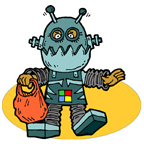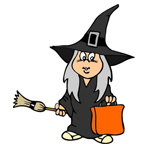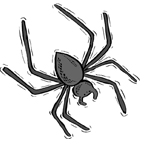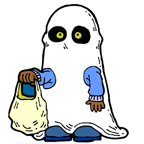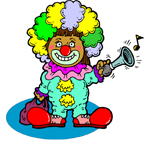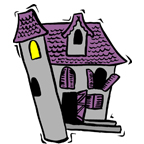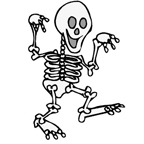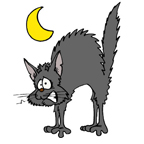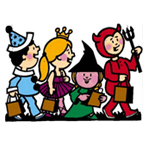Thank you all who participated in yesterday’s Trivia Night!
Below you’ll find answers to round’s questions as well as the names of winners for each round.
Round 1: Early Child Development
1. Name at least 3 characteristics of child directed speech
These include: motherese, repetition, modeling speech, simple syntax, slowing rate, using a higher pitch as well as using an exaggerated intonation pattern.
2. What is the critical period hypothesis? It is a time period during which language acquisition takes place
3. Name at least 3 functions of communicative behavior during infancy
These include: obtaining attention, seeking approval, seeking assistance, seeking attachment just to name a few
4. Name 2 types of echolalia: Immediate and Delayed
5. What is jargon and up until what age is it appropriate in children? Jargon is not true speech but rather pre-linguistic “nonsensical” vocalizations which involve adult-like stress and intonation patterns. Jargon usually begins to occur around 10-11 months of age in children and can typically last up until about 18 months of age give or take depending on the individual development rate of the child in question.
Round 2: Internationally Adopted Children
1. As related to internationally adopted (IA) children, what does the acronym CLM stand for and what does it mean?
CLM stands for Cognitive Language Mastery. It is the language needed for formal academic learning. This includes listening, speaking, reading, and writing about subject area content material including analyzing, synthesizing, judging and evaluating presented information. This level of language learning is essential for a child to succeed in school. CLM typically takes years and years to master, especially because, IA children did not have the same foundation of knowledge and stimulation as bilingual children in their birth countries.
2. ”The pattern of language acquisition in internationally adopted children is often referred to as a second first language acquisition” (Scott et al., 2011). Why? Because the first language (which is typically delayed and limited to begin with due to adverse effects of institutionalization) becomes completely obsolete as English is learned. So they end up learning L2 literally from scratch.
3. Why CAN’T we treat Internationally Adopted children as bilingual speakers? Because they are typically adopted by parents who do not speak their birth language as a result of which they experience rapid birth language attrition and forget their birth language very rapidly.
4. IA children may present with “normal” language abilities but still display significant difficulties in this area of functioning cognitive-academic and or social pragmatic communication (acceptable responses).
5. Finish the following sentence: “Any child with a known history of speech and language delays in the sending country should be considered to have true delays or disorders and should receive speech and language services after adoption.” (Glennen, 2009, p.52)
Round 3: Fetal Alcohol Spectrum Disorders
1. FASD is an umbrella term for the range of effects that can occur due to maternal alcohol consumption during pregnancy which may create physical, cognitive, behavioral, as well as learning/language deficits. It is NOT a clinical diagnosis. Please list at least 3 CURRENT terms under the FASD umbrella (see http://depts.washington.edu/fasdpn/htmls/fasd-fas.htm for details)
- Fetal Alcohol Syndrome (FAS)
- Partial FAS
- Static Encephalopathy (alcohol exposed)
- Neurobehavioral Disorder (alcohol exposed)
2. Name at least 3 characteristics of infants/toddlers with alcohol related deficits
- May show failure to thrive
- Increased sensitivity to sensory stimuli
-
Delayed speech/language milestones
-
Decreased muscle tone and poor muscle coordination
-
Poor self regulation
3. Since behavioral problems become more pronounced during the school years, many researchers found that the primary deficit of school aged children with FASD is in the area of (acceptable responses below)
- Daily Functioning Skills
- Self-regulation difficulties
- Problem Solving Issues
- Social/emotional problems
4. Finish the following sentence: adolescents with FASD have significant DIFFICULTY LEARNING FROM Experience
5. Why is early detection of alcohol related deficits important? Because it can lead to
- Early and Appropriate Service Delivery
- Improved Adaptability
- Improved Functioning
- Improved Outcomes
AND NOW THE WINNERS:
 Today I am very excited to introduce to you my brand new product which has been long in the making. “Speech Language Assessment of Older Internationally Adopted Children”. In the past I have written a number of articles and blog posts as well as done a number of presentations on related topics. I finally decided that it’s a great time to put it all together and created this 65 slide presentation which succinctly explains how to assess speech language abilities of older Internationally Adopted (IA) Children.
Today I am very excited to introduce to you my brand new product which has been long in the making. “Speech Language Assessment of Older Internationally Adopted Children”. In the past I have written a number of articles and blog posts as well as done a number of presentations on related topics. I finally decided that it’s a great time to put it all together and created this 65 slide presentation which succinctly explains how to assess speech language abilities of older Internationally Adopted (IA) Children.

 Today Thanks to the generosity of Lavelle Carlson of
Today Thanks to the generosity of Lavelle Carlson of 
 Inattentiveness, hyperactivity, and impulsivity are the most common presenting behavioral problems in at-risk children. This workshop will describe select speech language causes of hyperactivity and inattentiveness in children beyond the ADHD diagnosis, including traumatic brain injury, auditory processing disorders, severe language disorders, as well as social pragmatic language deficits.It will review case examples to illustrate the importance of differential diagnosis. Implications for assessment as well as the need for relevant referrals will be discussed.
Inattentiveness, hyperactivity, and impulsivity are the most common presenting behavioral problems in at-risk children. This workshop will describe select speech language causes of hyperactivity and inattentiveness in children beyond the ADHD diagnosis, including traumatic brain injury, auditory processing disorders, severe language disorders, as well as social pragmatic language deficits.It will review case examples to illustrate the importance of differential diagnosis. Implications for assessment as well as the need for relevant referrals will be discussed. This article was originally published in December 24, 2012 issue of Advance for Speech Language Pathologists and Audiologists under the title: “Adoption & Pragmatic Problems” (pp 6-9)
This article was originally published in December 24, 2012 issue of Advance for Speech Language Pathologists and Audiologists under the title: “Adoption & Pragmatic Problems” (pp 6-9) 

 There are many fun language based activities parents can do at home with their newly (and not so newly) internationally adopted preschool and school aged children in the fall. One of my personal favorites is bingo. Boggles World, an online ESL teacher resource actually has a number of ready made materials, flashcards, and worksheets which can be adapted for such purposes. For example, their
There are many fun language based activities parents can do at home with their newly (and not so newly) internationally adopted preschool and school aged children in the fall. One of my personal favorites is bingo. Boggles World, an online ESL teacher resource actually has a number of ready made materials, flashcards, and worksheets which can be adapted for such purposes. For example, their 

